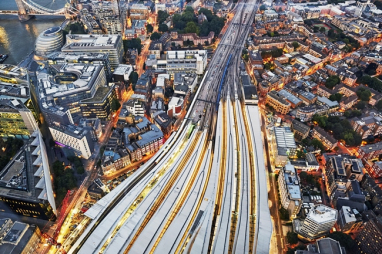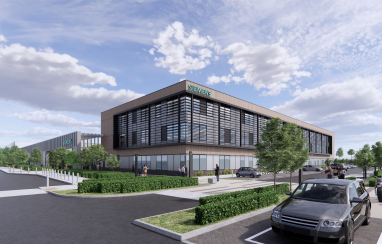- Nike Air Max 1 Ultra Moire University Red 1 Ultra Moire University Red 2 Terra Blush AJ6599 - Nike Air Max 1 Ultra Moire University Red - 201 Release Date , IetpShops
- Yeezys - Jordans, Musee-jacquemart-andre News, Jordan Essentials Statement Hoodie - release dates & nike.
- Midnight Navy / White , lower NIKE AIR JORDAN 1 MID SE DENIM CINNABAR HEMP-WHITE - lower Nike SB Kearny Cargo Pants - IlunionhotelsShops
- SBD - 600 Mid GS Medium Soft Pink FD8780 , NIKE◆AIR JORDAN 5 RETRO TORO BRAVO 27.5cm RED DD0587 - 116 - NIKE◆AIR JORDAN 5 RETRO TORO BRAVO 27.5cm RED DD0587-600
- Jordan Trunner Q4 343408-171 - Air LOW Jordan 1 Art Basel Igloo Rust Pink - LOW Jordan LOW Jordan ADG 3 sneakers Schwarz
- best nike basketball shoes
- Air Jordan 1 Blue Chill Womens CD0461 401 Release Date 4
- Air Jordan 3 Rust Pink CK9246 600
- all star air jordan 1 gotta shine
- kids air jordan
- Home
- News and analysis
- Info hubs
- Events
- Video
- Case Studies
- About us
- Magazine
- Advertising
Produced for the industry by the Association for Consultancy and Engineering
Opinion
Investing now to futureproof tomorrow’s infrastructure

With existing infrastructure systems straining to meet demand, updating of existing infrastructure networks and massive new investment is a priority to support expected rates of growth, say Helen Garthwaite and Suzanne Gill.
As global populations both grow and become ever more connected - both physically and digitally - cities across the world are increasingly recognising the need to significantly invest in infrastructure today to prepare for tomorrow. Fundamentally, existing infrastructure systems are straining to meet demand, with McKinsey Global Institute estimating that the world will need to invest $3.3 trillion in economic infrastructure (ranging from airports and highways to telecoms and power) annually until 2030 just to support current expected rates of growth.
For the UK, the infrastructure priority was tackled head on in a post-election statement by chairman of the independent National Infrastructure Commission, Lord Adonis. His subsequent 12 priorities - spanning from London airport expansion to an Eastern crossing of the River Thames, as well as action around telecoms and power - invoked a Victorian spirit with large-scale infrastructure planning central to UK’s global competitiveness and productivity.
To this end, connecting UK cities with each other through updating of existing infrastructure networks is a priority, but so is connecting the UK to other global powerhouses. The need is summarised poignantly by Adonis with there being “no point saying Britain is open to the world if business cannot get in because Heathrow is full”.
Arguably the UK is taking some steps to address its historic underinvestment in infrastructure. The mayor of London’s latest transport strategy will have struck the right note for many city dwellers, addressing concerns around the digital and physical infrastructure within the capital, along with an appreciation of where these converge.
Whilst this forward-looking approach is to be applauded, there remain real challenges to effective implementation. London, and the new devolved city mayors of Birmingham and Manchester, do have some powers to implement significant change but civic governance structures will likely need to adapt to keep up with the pace of change. Whilst one city solution may not suit all, city-to-city collaboration at this level may be valuable and consideration should be given to how this can be facilitated for the future.
However, the city of the future will be nothing like its Victorian predecessors; tomorrow’s city is a smart, connected city and today’s challenge is to prepare and invest accordingly. For example, it is estimated that £17bn could be added to UK output by 2025 as a result of increased broadband speeds (SQW Impact Report), so it is unsurprising to see Adonis emphasise the need for renewed attention to the government’s broadband and mobile commitments.
Further, Cisco predicts that global internet traffic in 2020 will be the equivalent to 95x the volume of 2005, with an estimated 30.7 billion connected devices at this point (IHS Markit). As we become ever-more digitally connected, new rules are likely to be needed and new risks addressed, with cyber-security and data protection firmly in the spotlight.
Arguably, this future is closer than we may think at first. The opening of the world’s first smart, sustainable street in London’s West End, has brought together energy efficiency, data-collection and pollution reduction. Elsewhere in the capital, BT has rolled out next-gen phone booths providing free superfast wi-fi replacing London’s iconic red pay-phone boxes, while increasing attention is rightly being given to the role of autonomous vehicles in cities and AI in public transport systems.
As these new solutions continue to develop, significant regulatory changes may be required to not only enable better, more effective, implementation, but also to police the system and ensure that tomorrow’s city is not only mobile and integrated, but safe and secure.
Lord Adonis has called on the UK government to address his particular priorities by the end of 2017, but some of the big questions that always arise with significant infrastructure projects is where does the money come from and how it is used?
There remains socio-political tension between how much new and future-proofed infrastructure is wanted (and often needed) and how much we are prepared for the state to deliver systems for the good of all. There is a place for private sector investment too, but current financial, lending and tax structures will probably need a shake-up to better facilitate and encourage the patient capital investment that infrastructure demands.
Helen Garthwaite and Suzanne Gill are partners at Wedlake Bell and co-founders of Tomorrow’s City, Today’s Challenge.







